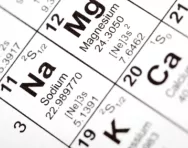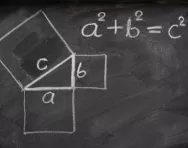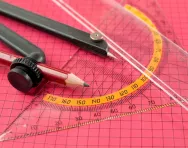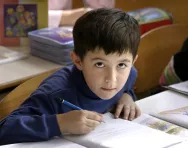Important update from TheSchoolRun
For the past 13 years, TheSchoolRun has been run by a small team of mums working from home, dedicated to providing quality educational resources to primary school parents. Unfortunately, rising supplier costs and falling revenue have made it impossible for us to continue operating, and we’ve had to make the difficult decision to close. The good news: We’ve arranged for another educational provider to take over many of our resources. These will be hosted on a new portal, where the content will be updated and expanded to support your child’s learning.
What this means for subscribers:
- Your subscription is still active, and for now, you can keep using the website as normal — just log in with your usual details to access all our articles and resources*.
- In a few months, all resources will move to the new portal. You’ll continue to have access there until your subscription ends. We’ll send you full details nearer the time.
- As a thank you for your support, we’ll also be sending you 16 primary school eBooks (worth £108.84) to download and keep.
A few changes to be aware of:
- The Learning Journey weekly email has ended, but your child’s plan will still be updated on your dashboard each Monday. Just log in to see the recommended worksheets.
- The 11+ weekly emails have now ended. We sent you all the remaining emails in the series at the end of March — please check your inbox (and spam folder) if you haven’t seen them. You can also follow the full programme here: 11+ Learning Journey.
If you have any questions, please contact us at [email protected]. Thank you for being part of our journey it’s been a privilege to support your family’s learning.
*If you need to reset your password, it will still work as usual. Please check your spam folder if the reset email doesn’t appear in your inbox.
What your child learns in Key Stage 3 science

Science is commonly taught in ability sets at this stage. For KS3, the syllabus covers chemistry, physics and biology.


FREE Year 6 to 7 transition packs
- English & Maths transition packs
- Practise journalistic writing, figurative language, persuasive text and more
- Revise key maths methods and concepts
Biology
Cells and organisation
- Cells as the fundamental unit of living organisms, including how to observe, interpret and record cell structure using a light microscope
- The functions of the cell wall, cell membrane, cytoplasm, nucleus, vacuole, mitochondria and choroplasts
- The similarities and differences between plant and animal cells
- The role of diffusion in the movement of materials in and between cells
- The structural adaptations of some unicellular organisms
- The hierarchical organisation of multicellular organisms: from cells to tissues to organs to systems to organisms.
The skeletal and muscular systems
- The structure and function of the human skeleton, to include support, protection, movement and making blood cells
- Biomechanics: the interaction between skeleton and muscles, including the measurement of force exerted by different muscles
- The function of muscles and examples of antagonistic muscles.
Nutrition and digestion
- The content of a healthy human diet: carbohydrates, lipids (fats and oils), proteins, vitamins, minerals, dietary fibre and water, and why each is needed
- Calculations of energy requirements in a healthy daily diet
- The consequences of imbalances in the diet, including obesity, starvation and deficiency diseases
- The tissues and organs of the human digestive system, including adaptations to function and how the digestive system digests food using enzymes as catalysts
- The importance of bacteria in the human digestive system
- Plants making carbohydrates in their leaves by photosynthesis and gaining mineral nutrients and water from the soil via their roots.
Gas exchange systems
- The structure and functions of the gas exchange system in humans, including adaptations to function
- The mechanism of breathing to move air into and out of the lungs, using a pressure model to explain the movement of gases, including simple measurements of lung volume
- The impact of exercise, smoking and asthma on the human gas exchange system
- The role of leaf stomata in gas exchange in plants.
Reproduction
- Reproduction in humans (as an example of a mammal), including the structure and function of the male and female reproductive systems, menstrual cycle, gametes, fertilsation, gestation and birth, to include the effect of maternal lifestyle on the fetus through the placenta
- Reproduction in plants, including flower structure, wind and insect pollination, fertilisation, seed and fruit formation and dispersal, including quantitative investigation of some dispersal mechanisms.
Health
- The effects of recreational drugs (including substance misuse) on behaviour, life and health processes.
Photosynthesis
- The reactants in, and products of, photosynthesis, and a word summary for photosynthesis
- The dependence of almost all life on earth on the ability of photosynthetic organisms, such as plants and algae, to use sunlight in photosynthesis to build organic molecules that are an essential energy store and to maintain levels of oxygen and carbon dioxide in the atmosphere
- The adaptation of leaves for photosynthesis.
Cellular respiration
- Aerobic and anaerobic respiration in living organisms, including the breakdown of organic molecules to enable all the other chemical processes necessary for life
- A word summary for aerobic respiration
- The process of anaerobic respiration in humans and micro-organisms, including fermentation, and a word summary for anaerobic respiration
- The differences between aerobic and anaerobic respiration in terms of the reactants, the products formed and the implications for the organism.
Relationships in an ecosystem
- The interdependence of organisms in an ecosystem, including food webs and insect pollinated crops
- The importance of plant reproduction through insect pollination in human food security
- How organisms affect, and are affected by, their environment, including the accumulation of toxic materials.
Inheritance, chromosomes, DNA and genes
- Heredity as the process by which genetic information is transmitted from one generation to the next
- A simple model of chromosomes, genes and DNA in heredity, including the part played by Watson, Crick, Wilkins and Franklin in the development of the DNA model
- Differences between species
- The variation between individuals within a species being continuous or discontinuous, to include measurement and graphical representation of variation
- The variation between species and between individuals of the same species means some organisms compete more successfully, which can drive natural selection
- Changes in the environment may leave individuals within a species, and some entire species, less well adapted to compete successfully and reproduce, which in turn may lead to extinction
- The importance of maintaining biodiversity and the use of gene banks to preserve hereditary material.
Chemistry
The particulate nature of matter
- The properties of the different states of matter (solid, liquid, gas) in terms of the particle model, including gas pressure
- Changes of state in terms of the particle model.
Atoms, elements and compounds
- A simple (Dalton) atomic model
- Differences between atoms, elements and compounds
- Chemical symbols and formulae for elements and compounds
- Conservation of mass changes of state and chemical reactions.
Pure and impure substances
- The concept of a pure substance
- Mixtures, including dissolving
- Diffusion in terms of the particle model
- Simple techniques for separating mixtures: filtration, evaporation, distillation and chromatography
- The identification of pure substances.
Chemical reactions
- Chemical reactions as the rearrangement of atoms
- Representing chemical reactions using formulae and equations
- Combustion, thermal decomposition, oxidation and displacement reactions
- Defining acids and alkalis in terms of neutralisation reactions
- The pH scale for measuring acidity and alkalinity, and indicators
- Reactions of metals with acids to produce a salt plus hydrogen
- Reactions of acids with alkalis to produce a salt plus water
- What catalysts do.
Energetics
- Energy changes on changes of state (qualitative)
- Exothermic and endothermic chemical reactions (qualitative).
The Periodic Table
- The varying chemical and physical properties of different elements
- The principles underpinning the Mendeleev Periodic Table
- The Periodic Table: periods and groups; metals and non-metals
- How patterns in reactions can be predicted with reference to the Periodic Table
- The properties of metals and non-metals
- The chemical properties of metal and non-metal oxides with respect to acidity.
Materials
- The order of metals and carbon in the reactivity series
- The use of carbon in obtaining metals from metal oxides
- Properties of ceramics, polymers and composites (qualitative).
Earth and atmosphere
- The composition of the Earth
- The structure of the Earth
- The rock cycle and formation of igneous, sedimentary and metamorphic rocks
- Earth as a source of limited resources and the efficacy of recycling
- The carbon cycle
- The composition of the atmosphere
- The production of carbon dioxide by human activity and the impact on climate.
Physics
Calculation of fuel uses and costs in the domestic context
- Comparing energy values of different foods in kJ (from labels)
- Comparing power ratings of appliances in Watts (W and kW)
- Comparing amounts of energy transferred (J, kJ, kW hour)
- Domestic fuel bills, fuel use and costs
- Fuels and energy resources.
Energy changes and transfers
- Simple machines give bigger force but at the expense of smaller movement (and vice versa): product of force and displacement unchanged
- Heating and thermal equilibrium: temperature difference between two objects leading to energy transfer from the hotter to the cooler one, through contact (conduction) or radiation; such transfers tending to reduce the temperature difference; use of insulators
- Other processes that involve energy transfer: changing motion, dropping an object, completing an electrical circuit, stretching a spring, metabolism of food, burning fuels.
Changes in systems
- Energy as a quantity that can be quantified and calculated; the total energy has the same value before and after a change
- Comparing the starting with the final conditions of a system and describing increases and decreases in the amounts of energy associated with movements, temperatures, changes in position in a field, in elastic distortions and in chemical compositions
- Using physical processes and mechanisms, rather than energy, to explain the intermediate steps that bring about such changes.
Describing motion
- Speed and the quantitative relationship between average speed, distance and time (speed = distance / time)
- The representation of a journey on a distance-time graph
- Relative motion: trains and cars passing each other.
Forces
- Forces as pushes or pulls, arising from the interaction between two objects
- Using force arrows in diagrams, adding forces in one dimension, balanced and unbalanced forces
- Moment as the turning effect of a force
- Forces associated with deforming objects: stretching and squashing (springs), rubbing and friction between surfaces, pushing things out of the way, resistance to motion of air and water
- Forces measured in newtons, measurements of stretch or compression as force is changed
- Force-extension linear relation: Hooke's law as a special case
- Work done and energy changes on deformation
- Non-contact forces: gravity forces acting at a distance on Earth and in space, forces between magnets and forces due to static electricity.
Pressure in fluids
- Atmospheric pressure, decreases with increase of height as weight of air above decreases with height
- Pressure in liquids, increasing with depth: upthrust effects, floating and sinking
- Pressure measured by ratio of force over area.
Balanced forces
- Opposing forces and equilibrium: weight held by stretched spring or supported on a compressed surface.
Forces and motion
- Forces being needed to cause objects to start or stop moving, or to change their speed or direction of motion
- Change depending on direction of force and its size.
Observed waves
- Waves on water as undulations which travel through water with transverse motion; these waves can be reflected, and add or cancel - superposition.
Sound waves
- Frequencies of sound waves, measured in hertz (Hz); echoes, reflection and absorption of sound
- Sound needs a medium to travel: the speed of sound in air, water and solids
- Sound produced by vibration of objects, in loud speakers, detected by their effects on microphone diaphragm and the ear drum
- Auditory range of humans and animals.
Energy and waves
- Pressure waves transferring energy; use for cleaning and physiotherapy by ultrasound; waves transferring information for conversion to electrical signals by microphone.
Light waves
- The similarities and differences between light waves and waves in matter
- Light waves travelling through a vacuum; the speed of light
- The transmission of light through materials: absorption, diffuse scattering and specular reflection at a surface.
- Use of ray model to explain imaging in mirrors, the pinhole camera, the refraction of light and action of convex lens in focusing, the human eye
- Light transferring energy from source to absorber leading to chemical and electrical effects; photosensitive material in the retina and in cameras
- Colours and the different frequencies of light, white light and prisms, differential colour effects in absorption and diffuse reflection.
Current electricity
- Electric current, measured in amperes: in circuits (series and parallel), currents add where branches meet, and current as flow of charge
- Potential difference, measured in volts, battery and bulb ratings; resistance, measured in ohms, as the ratio of potential difference to current
- Differences in resistance between conducting and insulating components.
Static electricity
- Separation of positive or negative charges when objects are rubbed together: transfer of electrons, forces between charged objects
- The idea of electric field: forces acting across the space between objects not in contact.
Magnetism
- Magnetic poles, attraction and repulsion
- Magnetic fields by plotting with compass, representation by field lines
- The Earth's magnetism, compass and navigation
- The magnetic effect of a current, electromagnets and DC motors.
Matter: physical changes
- Conservation of material and of mass, and reversibility, in freezing, melting, evaporation, sublimation, condensation and dissolving
- Similarities and differences, including density differences, between solids, liquids and gases
- Brownian motion in gases
- Diffusion in liquids and gases driven by differences in concentration
- The difference between chemical and physical changes.
Particle model
- The differences in arrangements, motion and closeness of particles explaining changes of state, shape and density; the anomaly of ice-water transition
- Atoms and molecules as particles.
Energy in matter
- Changes with temperature in motion and spacing of particles
- Internal energy stored in materials.
Space physics
- Gravity force, weight = mass x gravitational field, on Earth and different planets and stars; gravity forces between Earth and the moon, and between Earth and the sun
- Our sun as a star; other stars in our galaxy; other galaxies
- The seasons and the Earth's tilt; day length at different times of the year and in different hemispheres
- The light year as a unit of astronomical difference.







